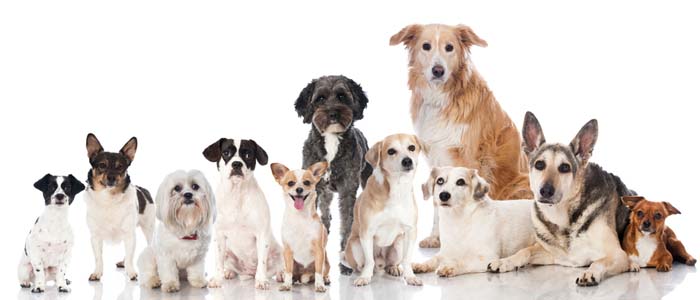This is probably the most common question asked in every practice. New owners want to know how the puppy they adopted is going to look like when it’s an adult, if it’s going to be big, small, furry, potentially dangerous, etc.
In case of pure breed puppies, this is very easy, but in most cases we can just “guess” the approximate adult size.
In case of cats the task is easier, because the number of feline breeds is smaller than canine ones, and the difference of size between breeds is not as big as in dogs. We can divide feline breeds in two categories: flat faced breeds, such as Persian and Exotic Shorthair, and non flat faced ones in one hand; and long and short haired breeds in the other hand. There are very little differences between crossed cats.
Knowing the breed of an animal it’s very important. Its external appearance is the result of its genome. Sometimes, when we know the external appearance of a dog (for example, a Rough Collie), we also know something about its genome (sensitivity against ivermectine in Collies). This helps the Vet to know which medicines can be used (and which ones cannot be used) according to the patient, and helps the owner to prevent accidents (for example dogs that are prone to collapse when over-exercising).
The most common and popular breeds all over the world, such as Labrador, Beagle or German Sheperd are easier to treat, because we know very well which are their particularities and weak spots (such as allergies, hip dysplasia, etc). But, what about crossed animals? Many owners believe crossed animals are stronger and healthier than pure breeds. This is true, because they are genetically stronger due to hybrid vigour, and they have a bigger genetic variability, which implies more available resources for overcoming successfully a health threat. A small genetic variability may imply declining fertility rate (and increased newborn mortality rates), weakness, etc. A good example of this would be what happened with some dynasties in which consanguine marriage was too common.
The problem with crossed dogs is they may have a dominant gene from a remote ancestor; this gene might be, for example, the one that produces Collies ivermectin sensitivity, but there might be nothing externally in that dog that indicates it’s the great-grandson of a Collie, so it might have an ivermectin treatment which may produce a serious problem.
There are some dogs that have a gene named ABCB1 which makes them have an abnormally increased sensitivity involving lots of different medicines. We are talking, for example, about some dogs in which the complete recovery after an anaesthesia with opioids takes 3-4 days instead of 24 hours. Many of these dogs have a genetic mutation which is not associated with any external characteristic, so, the only way to detect this condition is a genetic test.
When a Vet chooses an antibiotic or antiparasitic treatment, the choice depends not only according to the disease, but also according to the characteristics of the patient. For this reason, every treatment must be tailor-made, and this includes vaccination plan and antiparasitic treatments.
For any question, ask your Vet.
Liliana Aldeguer Cerdán col 793
English translation by Sergio Reina Esteban col 747



